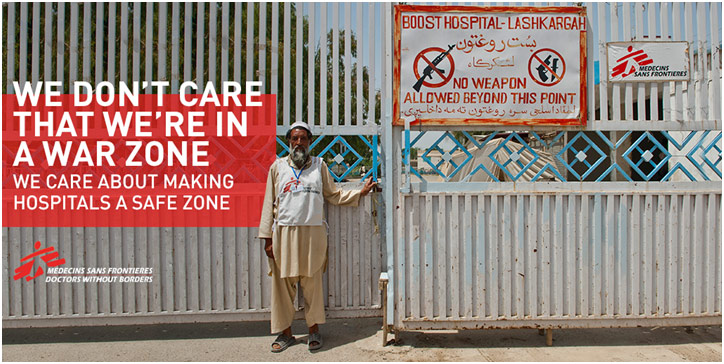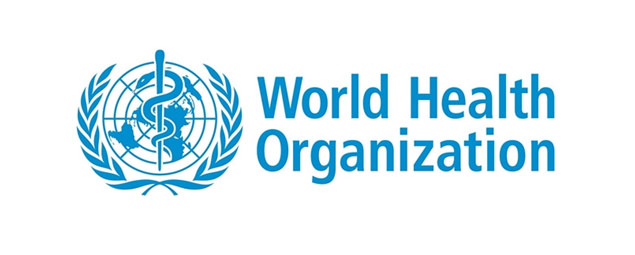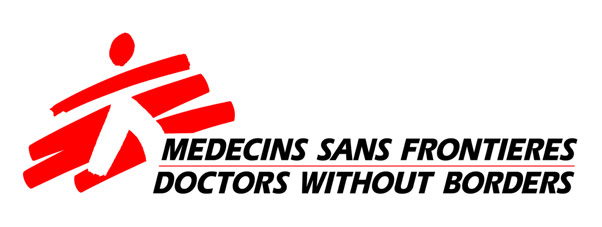Global health initiatives help the world band together with a common purpose towards saving lives and fighting sickness. With the help of these organizations like the WHO, UNICEF, CARE International, and Doctors without Borders, we can fight off health problems such as epidemics that threaten to kill millions. Additionally, many of them provide support and expert help in other crises such as the Syrian refugee crisis and the Yemeni Civil War. Together, they have been able to do so much for the world, helping people access medical care when they need it the most.

Basis of International Health Organizations
The World Health Organization (WHO) is a sector of the United Nations with its headquarters in Geneva, Switzerland and six regional offices in Southeast Asia, Africa, the Americas, Europe, the Eastern Mediterranean, and the Western Pacific. It formed on April 7th, 1948 to combat the health problems of the world, and this date is now celebrated as World Health Day. The WHO functions under a system with two main bodies: the World Health Assembly and the Executive Board. The World Health Assembly meets annually in Geneva and is represented by 194 countries, which make up the WHO member states. Each member state has one vote; although, they can send up to three representatives to help make decisions and determine health policy with the other member states. They also approve the budget and work to deal with other financial issues. The Executive Board is made up of 34 members who are elected by the World Health Assembly for three-year terms and meet twice a year. Additionally, they enforce the decisions of the assembly; however, they can act themselves in the need of an emergency. Lastly, they also approve potential nominations from member states for the position of director-general. Following this and several other rounds to narrow the field down to three candidates, the World Health Assembly then elects the director-general. Recently, Dr. Tedros Adhanom Ghebreyesus was appointed for a five-year term as director-general in May of 2017. Under this structure, the WHO focuses on improving global public health with the current leadership priorities as “universal health coverage; international health regulations; increasing access to medical products; social, economic, and environmental determinants; non-communicable diseases; and health-related sustainable development goals.” By guiding research, maintaining health statistics, and focusing on disease prevention among other things, the WHO is able to help serve the world and make it a healthier place.

WHO Logo
Founded on December 11th, 1946, The United Nations Children’s Fund (UNICEF) is another UN program with headquarters in New York City that helps provide humanitarian assistance to some of the most vulnerable members of the human population. With field offices in nearly 190 countries, UNICEF works with local governments to help “unite for children.” UNICEF also has nearly 34 different NGOs (non-governmental organizations) who work to support its mission. In regards to formal structure, the executive director, currently, Anthony Lake, is the head with the chief of staff and deputy executive directors under him. Additionally, there are also regional directors who are in charge of the 7 regions: the Middle East and North Africa, East Asia and Pacific, Europe and Central Asia, Eastern and Southern Africa, Latin America and the Caribbean, West and Central Africa, and South Asia. There is also an executive board made up of 36 member states who meet thrice a year and approve UNICEF policies and deal with financial matters. Under this structure, UNICEF works to protect the rights of all children, regardless of their race, religion, sexual orientation, etc. They work to prevent HIV/AIDS cases among children, medically and psychologically help children who have been abused, encourage better nutrition, and provide vaccines to children who would otherwise not have access to them. From war-ravaged countries in Syria to cyclone-hit areas like Vanuatu, UNICEF, with its enormous global presence, is there to help countries that are unable to meet basic health necessities in emergencies. Through all of these initiatives, UNICEF is able to make an enormous difference to the world in a medical aspect.

UNICEF Logo
Founded in 1945, CARE International is a humanitarian NGO based in Geneva, Switzerland that has worked in nearly a hundred countries in the world to help fight poverty and provide emergency relief. CARE International started as a way to give CARE packages to the Allied soldiers in World War II, and now it is a massive agency that reaches almost 350 million people in total and has fourteen national members, which include the US, India, Peru, Thailand, and Japan among other countries. The secretary-general of CARE International is Dr. Wolfgang Jamann who presides over the executive management team, which includes the deputy secretary-general, program director, and the secretariat. Additionally, there is a council and supervisory board, which governs the code of CARE International. A council is a place where each of the members can send representatives to express their views while the supervisory board is charged with the management of the organization. With this structure, they focus on trying to change the world with various initiatives like stopping food shortages, helping increase women’s status in society, and helping those entrapped in the vicious cycle of poverty. For example, in Bangladesh, CARE International has helped the Rohingya refugees who had fled violence in Myanmar and helped empower Bangladeshi women by employing them in a sales program. Similarly, in the Democratic Republic of the Congo, CARE International has helped to fight the rising levels of rape and violence caused by the insecure situation. With partnerships and individual initiatives, CARE International has been able to change the lives of hundreds of millions of people in the world by tackling the origins of poverty.

CARE International Logo
Founded on December 20th, 1971, Medecins Sans Frontieres (MSF), also known as Doctors Without Borders, is another NGO with headquarters in Geneva, Switzerland that seek to deliver medical aid to “people affected by conflict, epidemics, disasters, or exclusion from health care.” They believe that medical care should go past all borders and be available to anyone who needs it, regardless of who they are and what their political affiliation is. With offices in 20 countries, which include Australia, Belgium, Denmark, Hong Kong, Korea, Switzerland, and the USA among others, MSF has a massive international force. In terms of organizational structure, they have a US board of directors who are elected by association members. This board of directors then elect the Executive Director who is responsible for the US organization. All of these individuals are under the current international president Dr. Joanne Liu. With this structure, MSF has provided emergency care in over fifty countries across the world with teams deployed in Yemen, Syria, South Sudan, and Afghanistan to name a few. In the end, MSF is to help save lives and improve the lives of the people that they do save, doing so by providing quality medical care to anyone who needs it. Their success is proven by their winning of the Nobel Peace Prize in 1999 for their high-quality work to help save lives and prevent outbreaks. Part of the reason why they won is that MSF is famous for reporting injustice even when it is against the host government’s desires, which has sometimes resulted in them being kicked out. Nevertheless, they continue to report the injustices they witness, representing the epitome of justice and integrity. In addition to that, they are often the quickest to act as shown in the Ebola outbreak in West Africa where MSF was the organization to take the lead there. They established multiple treatment centers and were helping the infected before anyone else. While other organizations lagged as bureaucracy slowed down their wheels of motion, MSF acted rapidly, saving thousands of lives in the process there, showcasing how big of a difference they make.

MSF Logo
Through the good work of these global initiatives, global health problems are reducing in their severity as organizations like the WHO, UNICEF, CARE International, and MSF are taking steps to help people who need it the most. By doing so, they are able to make positive changes step-by-step to ensure that everyone, regardless of their identity is able to live a good life, free from diseases.
References
Care. care-international.org/. Accessed 11 Nov. 2017.
Care. Care, careclimatechange.org/. Accessed 11 Nov. 2017.
Fink, Sheri, et al. “Doctors Without Borders Evolves as It Forms the Vanguard in Ebola Fight.” The New York Times, 10 Oct. 2014, nytimes.com/2014/10/11/world/africa/doctors-without-borders-evolves-as-it-forms-the-vanguard-in-ebola-fight-.html. Accessed 11 Nov. 2017.
“Germany/Luxemburg.” CARE, care.org/country/germanyluxemburg. Accessed 11 Nov. 2017.
“Health.” UNICEF: For Every Child, .unicef.org/health/. Accessed 11 Nov. 2017.
Médecins Sans Frontières. doctorswithoutborders.org/about-us. Accessed 11 Nov. 2017.
Médecins Sans Frontières: Doctors Without Borders. Médecins Sans Frontières, boards.greenhouse.io/workplacement/jobs/765524#.WgdsiBNSy-t. Accessed 11 Nov. 2017.
“Our Work.” Care, care.org/our-work. Accessed 11 Nov. 2017.
“Types of Projects.” Médecins Sans Frontières, doctorswithoutborders.org/our-work/how-we-work/types-of-projects. Accessed 11 Nov. 2017.
“UNICEF Executive Board.” UNICEF: For Every Child, 8 Nov. 2017, unicef.org/about/execboard/. Accessed 11 Nov. 2017.
UNICEF Logo. Wikimedia Commons, commons.wikimedia.org/wiki/File:UNICEF_Logo.png. Accessed 11 Nov. 2017.
We Don’t Care That We’re in a War Zone. Médecins Sans Frontières, msf.org.za/stories-news/press-releases/south-africa-provocative-doctors-without-borders-digital-campaign. Accessed 11 Nov. 2017.
World Health Organization. Aeroflow Healthcare, aeroflowinc.com/aeroflows-who-code-position-statement/who-logo-638×300/. Accessed 11 Nov. 2017.
“World Health Organization (WHO).” Encyclopedia Britannica, 27 Oct. 2017, britannica.com/topic/World-Health-Organization. Accessed 11 Nov. 2017.
Youde, Jeremy. “So You Want to Be the Next Director-General of the World Health Organization….” Duck of Minerva, 16 Oct. 2016, duckofminerva.com/2016/10/so-you-want-to-be-the-next-director-general-of-the-world-health-organization.html. Accessed 11 Nov. 2017.














